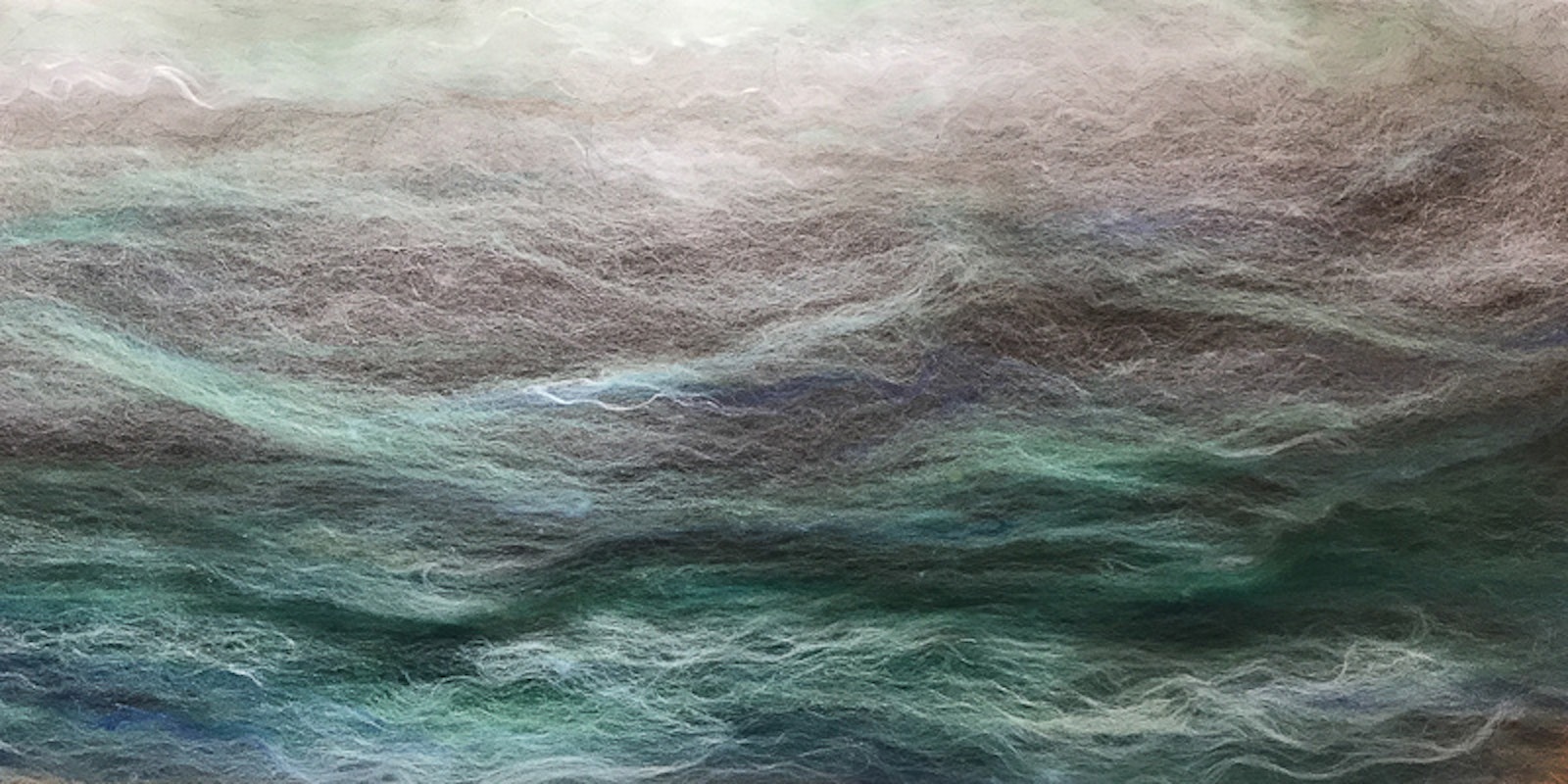Last time, we created three carded batts: white, gray, and greeny blues. Precarding the various wools and silks helps to create a smooth, blended batt (my goal for this project). These pre-carding passes were to blend fibers, while the last carding pass assembles the colors into a gradient batt. I divided the three pre-carded batts into piles to create three new batts that combine the colors.
Full batts to organized gradients.
Creating a gradient
I like to have one color that is used throughout a gradient batt to help unite all the colors, so I split the gray batt in half and set one piece aside. Now I have three batts: white, gray (half), and blue. Pull each of these three batts into thirds to make nine small chunks. Organize these into three piles so that each one has white, gray, and blues. Lastly, strip the remaining gray half-batt into three long pieces, placing one strip with each of the carding piles like the image above.
Onto the drum.
Last carding pass
Layer each of the three batts as follows:
- Spread the long gray strip out so that it reaches from one side of the infeed tray to the other. When it is fed into the carder, it creates a thin layer of gray across the full width of the drum.
- Next, pull the white batt into smaller chunks, draft lightly, and feed it into the carder so that it only covers a third of the drum.
- Repeat Step 2 for gray.
- Repeat Step 2 for blues, but save just a little chunk back. Continue turning the drum and hold this last little piece of blue against the main drum, moving it across the entire drum. This will let a little of the greeny blues spread over the entire drum and create some little flecks of color in the final yarn and project.
When you have worked Steps 1–4 two more times, three beautiful batts remain! Next, I’ll show you how I prepared these batts for spinning and the gradient cowl I had at the end!
Forlorn fibers to fancy batts.




